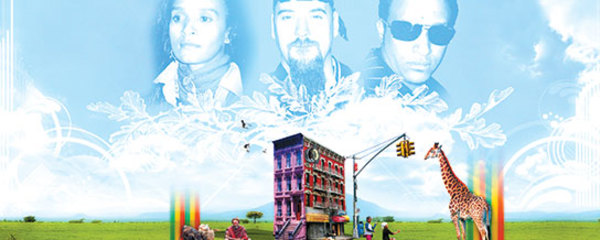Bole 2 Harlem: And Back Again
Haile Selassie–the long-reigning Ethiopian king and, to Jamaican Rastafarians, incarnation of God on Earth–stared down […]
Bole 2 Harlem: And Back Again
Haile Selassie–the long-reigning Ethiopian king and, to Jamaican Rastafarians, incarnation of God on Earth–stared down […]

Haile Selassie–the long-reigning Ethiopian king and, to Jamaican Rastafarians, incarnation of God on Earth–stared down at David Schommer from the walls of his childhood home. In his youth, Schommer would leave his mandatory piano and dance lessons at the local community center and sneak into an upstairs room to learn hand drumming from a Guinean teacher. But while Africa, and Ethiopia in particular, was close to his family’s heart, it was far from their home in the collegiate Chicago suburb of Evanston, IL.
“It always seemed natural for me to learn African drums [and] African dance,” says Schommer. “My father lived in Ethiopia from 1950 to 1958, and helped found the first university in Addis Ababa. He had a great life experience there, and I grew up with those stories.”
Schommer has spent his life as a professional musician, going from pit orchestras and the cast of Stomp to drum & bass productions as Duke Mushroom to writing, producing, and engineering for a string of major-label artists. But with the release of Bole 2 Harlem–a Schommer-produced collaboration between Ethiopian and American rappers, instrumentalists, and singers–Schommer has made his own contribution to Ethiopian culture–one that you can hear any night of the week, blasting from the taxi cabs of Addis Ababa.
“There’s probably about 100,000 taxi drivers in Addis Ababa,” says Schommer, “and [the album is] popular with them. They don’t exactly have [Neilsen] SoundScan over there, but I guess it’s sold well–on cassette, of course!” Bole 2 Harlem isn’t exactly a mainstream American recording. The Amharic lyrics (by rapper Maki Siraj) and titles, the wild plucking of Balla Tounkara’s kora, and the wailing and undulating vocals of Tigist Shibabaw make Bole 2 Harlem distinctively African, even as its hip-hop, funk, and electro beats audibly link the disc to New York City. Bole 2 Harlem can partially thank some strange bedfellows for its existence–it was productions for artists such as Carole King and the Baha Men that gave Schommer the financial independence to turn his Harlem studio into a cross-cultural stomping ground. “When I was doing the major label thing”d get new artists through every day,” he says. “Labels would say, ‘There’s this girl, just like Christina Aguilera, but she’s only 14! We’ve got a 10-million-dollar- and 19-year development contract, but we want her to write.’ We’d end up writing the songs for her, because what the hell does she know about suffering, struggle, and rejoicing–the things I think songs are about?”
On Bole 2 Harlem, the artists “know who they are,” says Schommer. Songs such as “Amet Bale,” which simply describes a man borrowing his brother’s clothes and car for a night out, offers a grounded worldview not found too often in popular music. “We wanted the perspective to be from [regular] people,” says Schommer. “If you point out that everyday experiences are valuable and poignant, it might be as small as a dragonfly landing on a pond, but that ripple effect is there.”

